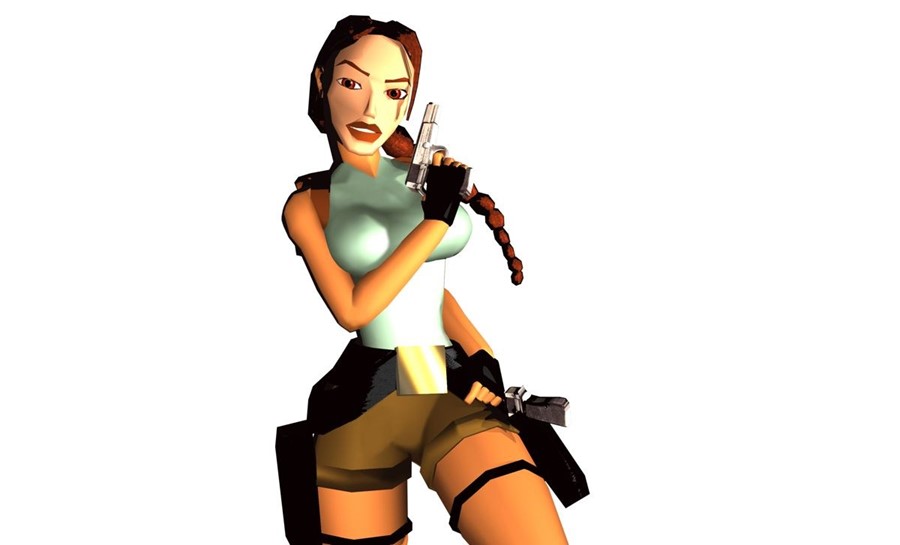From gunslinging girlboss to naturalistic survivalist, no woman in history has had more faces than the Tomb Raider protagonist
Is there a woman in history with more faces than Lara Croft? Ever since she began raiding tombs in 1996, wearing nothing but a tank top and brown booty shorts while wielding dual pistols and a French braid, her appearance has constantly morphed and mutated. Only Lara Croft can say she’s adopted the face of Angelina Jolie or taken on the voice of Minnie Driver (not, admittedly, at the same time), and boast of being chased by a T-Rex or fighting off a mutant spider from space.
In fact, in 2023 Lara Croft has had not one, but two facelifts. First off, the intrepid explorer got a makeover for her appearance in Call of Duty: Modern Warfare 2 and Warzone. It was a bold redesign, one that amalgamated the pixelated classic Croft aesthetic with the more rugged depiction found in Square Enix’s 2013 reboot. And secondly, Netflix released the trailer for its upcoming series, Tomb Raider: The Legend of Lara Croft. This newest animated version of Croft (she’s appeared hand-drawn before) also appears to combine the more pointy image of old-school Tomb Raider with the rounded realism of later games.
These reimaginings of Lara Croft likely mark the beginning of a new era for Tomb Raider. After the franchise was sold in 2022, a new title was announced, with Amazon Games acting as the publisher. Meanwhile, a remaster of the first three games in the series is set for release early in 2024. It all solidifies the enduring appeal of Lara Croft and Tomb Raider. From her pixelated beginnings to her various live-action adventures, she is an icon who, quite literally, breasted boobily into video game history.
However, while she’s been engaged in murderous archaeological exploits for nearly three decades, each iteration of Lara Croft has been different. With each new appearance comes a new personality and backstory. She’s been a girlboss gunslinger, a rich girl with daddy issues, a burglar, a mercenary and a bestselling author. She is an ever-evolving enigma, a woman with many faces. Like an adventure from a Tomb Raider game, we have decided to solve this puzzle by charting her evolution.
THE PIXELATED GIRLBOSS
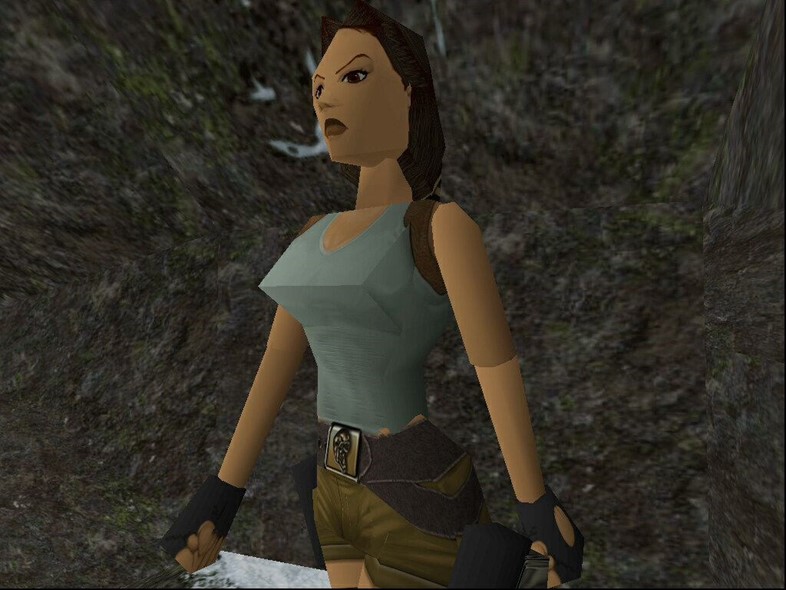
In the first few Tomb Raider games, Lara Croft wasn’t bogged down with the baggage of backstory; her origin tale was reserved for the manual, telling her story from British aristocrat to world-famous adventurer. Instead, she was simply a girl with a pair of Windsor glasses, access to a vast armoury of weapons, a surprising imperviousness to cold weather, and a cocky personality. She was there to raid tombs and look hot while doing it, slaying everything from dinosaurs to an incredible amount of nameless goons in her wake. “She was mysterious and had a danger about her. This gave her a real difference to other female game characters that were basically sex objects,” said Tomb Raider creator Toby Gard in an interview with The Guardian in 2006.
Nevertheless, a sex object is what Croft would become. In fact, Gard exited the franchise following the first game after original developers Core Design and publishers Eidos Interactive leaned further into Croft’s sex appeal, most controversially making her breasts bigger. “It wasn’t about her boobs getting bigger,” Gard said. “She was always designed to look good – people’s psychology is that they like attractive characters of both sexes. What I objected to was the marketing, which represented Lara in a way that was nothing like the character.”
For fans, that didn’t seem to matter, and Croft became a sex symbol, even appearing on the cover of The Face in 1997 with the tagline “Silicon Chick”. Her triangular appearance, a quirk of the game design to keep the polygon count down, soon became instantly recognisable, as did her signature look: a blue tank top and brown booty shorts: “Everything about Lara was to exaggerate her ‘femaleness’,” Gard said in the 2001 documentary Lara Croft: Lethal and Loaded. After all, nothing says femininity like dual-wielding pistols and shooting at a pack of velociraptors.
THE JAMES BOND OF ARCHAEOLOGY
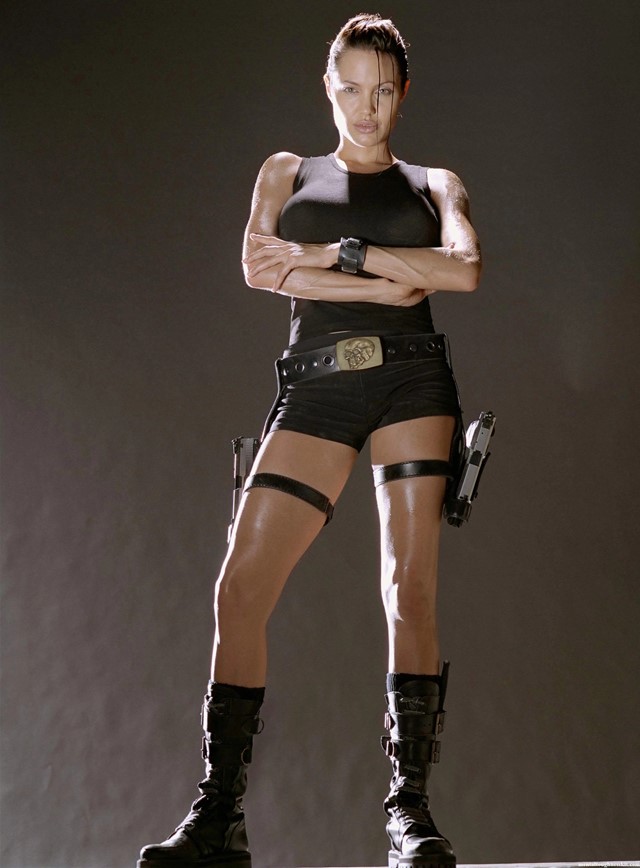
When it came to casting Lara Croft in a movie, only the angular features of Angelina Jolie could capture the pointed polygonal shape of our adventurous archeologist. However, some gamers at the time didn’t seem to think that Jolie was the right fit, mainly due to her off-screen antics, including her affinity for knives (?) and blood necklaces.
For director Simon West, though, this made her the perfect choice. “It was always Angelina,” he told Empire. “I mean, Lara sleeps with knives and doesn’t take shit from anybody. That’s AJ down to a tee.” Of course, Jolie had her reservations too; she viewed Lara Croft as simply “a body” and “a little outfit”. West won her over with Croft’s backstory. “She became kind of beautiful to me,” Jolie told Empire.
After the film became a box-office success, Jolie returned for its sequel, Lara Croft: Tomb Raider – The Cradle of Life, this time helmed by Speed director, Jan de Bont. “I kind of like working with [Angelina Jolie],” de Bont told Uproxx in 2020. “She’s a character, but I thought she was a very interesting character to work with. She’s definitely very opinionated. But not in a negative way, I feel. She was difficult to work with, but for me it was, probably, not a problem.”
The problem for de Bont, he said, was studio interference, which mired the whole movie-making process. “It wasn’t a great experience,” he said.
LARA CROFT 2.0: ELECTRIC BOOGALOO
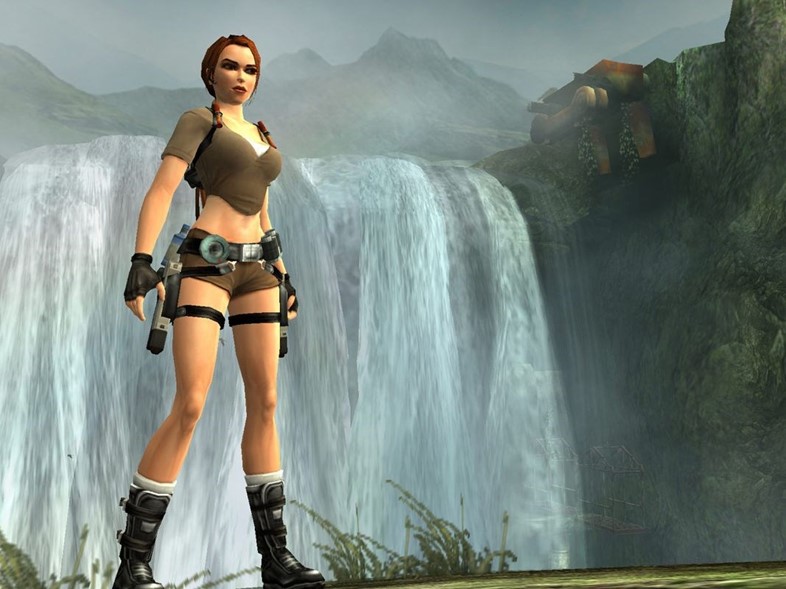
In 2004, Lara Croft was trapped in a tomb with no way out. The second movie was considered a flop, the games had lost direction, and the original developers were so exhausted by her that they actually killed the character off at the end of The Last Revelation. Enter developer Crystal Dynamics and the return of Tomb Raider creator Toby Gard.
In order to save Lara Croft from extinction, the decision was made to reboot the franchise. This included further developing and reframing Croft’s backstory. Instead of girlboss with guns, she was painted as a slightly tragic figure who had lost both her parents. Her motivation for tomb raiding was simple joie de vivre, but by the desire to uncover the mysterious circumstances following her mother’s death.
With this new iteration of Tomb Raider came a new aesthetic for Lara Croft. The blocky, angular design was replaced with something softer and more human. “[I decided] to keep very, very caricatured proportions and shape,” Gard said in a documentary Tomb Raider: 10 Years Retrospective, “but go for real realism in terms of muscle, bone structure and detail.” In reality, this meant that Croft’s bosoms were more accurately sized, although her waist remained tiny, and her signature braid was replaced with a ponytail. “It was a long, arduous process, since we were keen to update her without alienating her fans, and that is a tough tightrope to walk,” Gard told Play magazine of the redesign.
The reimagined Lara Croft made her first appearance in 2006’s Tomb Raider: Legend, a game that kicked off a new trilogy of titles including Tomb Raider: Anniversary, a remake of the original Tomb Raider game, and Tomb Raider: Underworld in 2008.
SURVIVALIST “NO-MAKEUP” MAKEUP LOOK
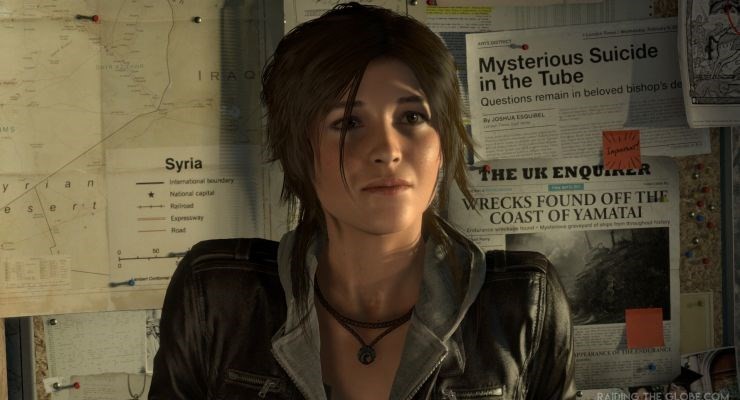
Despite being given a facelift only a few years earlier, Lara Croft once again found herself in trouble. As a result, she was once again sent to the lab for an upgrade. This time the redesign was inspired by the success of the Uncharted series of games, which took the familiar temple-raiding gameplay of Tomb Raider and melded it with gritty storytelling straight from Hollywood, as well as advances in video game development.
As a result, Lara Croft was redesigned with realism in mind. Performance capture ensured that her movements were as lifelike as possible, while her face was built from scans taken of the face of model Megan Farquhar. The absurd character proportions were also reigned in so that Croft looked less like a blow-up doll and more like an actual person.
“We realised that there were certain traits which made Lara recognisable as Lara – the ponytail, the dark eyes and full lips – and we felt we should keep them, but the rest of her look was reimagined and redrawn for our times,” Brian Hortan, who worked as the senior art director on the game, told Gamesradar. “She’s lost some of those cartoon-like curves of previous iterations; in this game we wanted her to seem more realistic, more like a person you could walk past on the street.”
This emphasis on naturalism extended to Croft’s origin story, which was completely reimagined. She was no longer a trigger-happy famous explorer but instead a 21-year-old innocent, forced to take lives to ensure her own survival. Mirroring all this was a rebooted Tomb Raider movie, which starred Alicia Vikander as Lara Croft.
Ultimately, though, this authentic, true-to-life version of Lara Croft would only survive two more games, Rise of the Tomb Raider and Shadow of the Tomb Raider, before hanging up her grappling hook and retiring from adventuring once more.
THE NEW TOMB RAIDER
In the years since Shadow of the Tomb Raider, Lara Croft has kept a low profile. She’s popped up in Fortnite and Call of Duty, the latter appearance causing quite a ruckus when her new look was revealed, but she’s not had a main outing since 2018.
That all looks set to change, however. In 2022, Amazon announced that they would be publishing a new Tomb Raider game, one that hoped to unify the disparate timelines into something comprehensive.
Meanwhile, Netflix announced that it would be the home of a new animated Tomb Raider series, Tomb Raider: The Legend of Lara Croft. The TV show marks the second time that Lara Croft has been animated on screen, and this time follows the events portrayed in Shadow of the Tomb Raider. Croft is no longer the young ingénue but is instead a fierce and rugged bow-and-arrow-wielding badass with ropes of muscle (although the ponytail remains). There’s also a rumour of a new live-action Tomb Raider TV show being developed at Amazon, too, with Phoebe Waller-Bridge allegedly tapped to write the scripts.
With so much coming up, the future looks bright for Lara Croft. What this means for her aesthetically, however, remains to be seen.
Join Dazed Club and be part of our world! You get exclusive access to events, parties, festivals and our editors, as well as a free subscription to Dazed for a year. Join for £5/month today.
